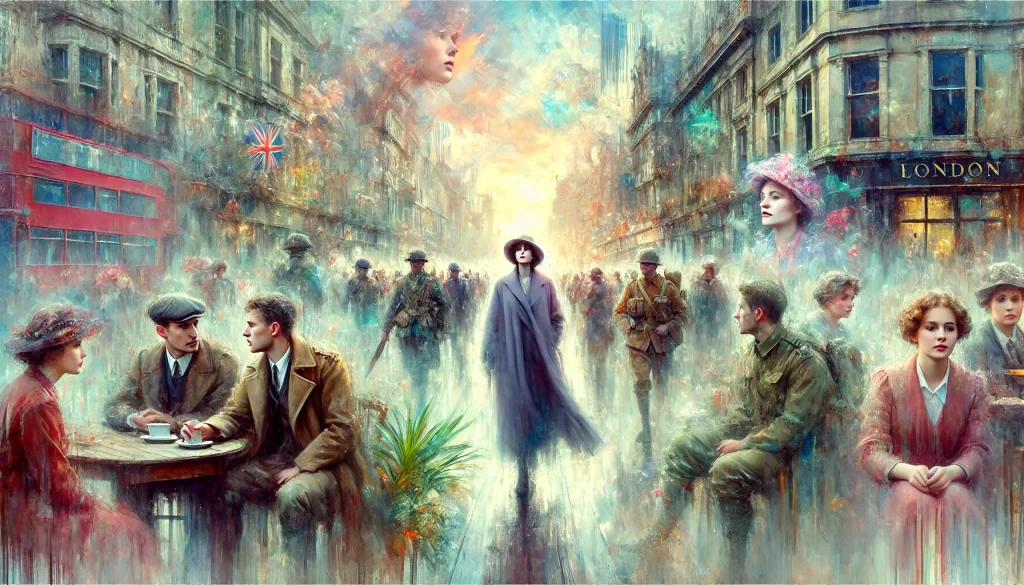Table of Contents
Reading literature in the impressionistic style provides a distinctive means of experiencing stories and emotions. This approach to writing focuses on capturing fleeting moments and personal perceptions rather than traditional, linear storytelling. This article will examine the fundamentals of impressionistic writing, its most recent developments, and the inventive ways in which it continues to reveal otherwise buried emotions.
Understanding Impressionistic Style Literature
What is Impressionistic Style Literature?
Impressionist writing expresses the author’s feelings and experiences. In contrast to traditional literature, which may have a simple plot and organized plotline, impressionist writing concentrates on the author’s feelings, thoughts, and sensory experiences. The writing aims to create vivid snapshots of moments, offering readers a glimpse into the author’s inner world.
Key Features of Impressionistic Style Literature
A few key elements characterize impressionist literature:
- Focus on Sensual Details: Authors portray emotions and environments through detailed sensory descriptions. It emphasizes how a scene feels, smells, or sounds rather than providing a clear description of the scene.
- Fragmented Narrative: There’s a chance that the tale deviates from the norm. Instead, poetry frequently consists of jumbled scenes or impressions representing the author’s perception or emotional state.
- Subjective Perspective: Rather than representing an objective reality, the story is highly subjective and personal, reflecting the author’s perspective.
Latest Updates in Impressionistic Style Literature

Modern Takes on Impressionistic Writing
Impressionist writing has changed recently, incorporating fresh methods and strategies. Modern authors blend traditional impressionistic techniques with contemporary themes and technologies, creating fresh ways to explore and present emotions. Some writers improve their impressionistic narratives with multimedia, such as interactive features and digital art.
Influence of Digital Media
The rise of digital media has impacted impressionistic literature. IAuthorsare is currently experimenting with digital platforms. to create immersive experiences. For example, online narratives and interactive e-books allow readers to engage with the Text in ways that traditional print cannot. Integrating digital elements into impressionistic literature opens new possibilities for emotional expression and reader interaction.
Reading literature in the impressionistic style provides a distinctive means of experiencing stories and emotions. This approach to writing focuses on capturing fleeting moments and personal perceptions
How Impressionistic Style Literature Unlocks Hidden Emotions
Capturing Fleeting Moments
Impressionist writing is excellent at encapsulating ephemeral, frequently elusive moments. By focusing on sensory details and personal impressions, this style allows readers to connect with a scene’s emotional depth. For example, instead of describing a sunset as a simple visual event, an impressionistic writer might explore the feelings and memories it evokes.
Creating Emotional Resonance
Impressionistic style literature’s fragmented and subjective nature creates a strong emotional resonance. By allowing readers to see the world through the author’s eyes, a stronger emotional bond may develop. This style emphasizes how personal experiences shape our understanding of the world and emotions.
Encouraging Reader Interpretation
Impressionistic literature encourages readers to interpret and engage with the text in their own way. Readers are required to actively engage in piecing together the story and its emotional impact because the narrative is frequently subjective and non-linear. This engagement can make the reading experience more personal and meaningful.
Also Read: Illustration Styles That Will Transform Your Art Instantly
Notable Examples of Impressionistic Style Literature

Classic Works
Some classic examples of impressionistic literature include works by authors like Virginia Woolf and James Joyce. Joyce’s “Ulysses” and Woolf’s “To the Lighthouse” are frequently mentioned as essential illustrations of this literary form. These works are known for their stream-of-consciousness technique and focus on personal perceptions and emotions.
Contemporary Authors
Modern authors continue to explore and expand upon impressionistic-style literature. Writers like David Mitchell and Annie Proulx incorporate impressionistic elements into their novels, blending them with contemporary themes and innovative storytelling techniques. These writers revitalize the custom, proving the style’s continued applicability and adaptability.
Impressionistic literature remains a powerful way to explore and express hidden emotions. Its emphasis on sensory details, subjective perspectives, and fragmented narratives offers a unique reading experience that resonates deeply with readers. Whether you are a seasoned reader or new to impressionistic-style literature, there is always something exciting to discover.





